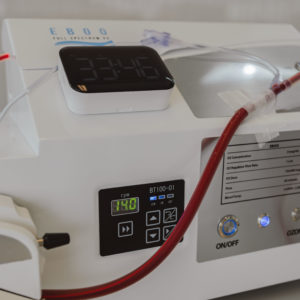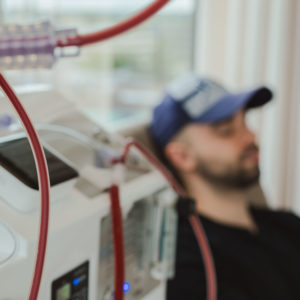
3 min|Dr. Alex Chan
SOT for Lyme and Co-infections
Wellness, HealthLyme and co-infections are notoriously difficult to diagnose and treat.
Treatment also becomes more challenging the further it’s started after the primary bite or infection. By the time I’m meeting my patients they have often undergone various forms of treatment including more conventional first-line courses of antibiotics. Treatments like antibiotics can leave lasting impacts on the patient’s microbiome. These microbiome changes may impact the patient’s digestion and absorption capabilities, which then can decrease the efficacy of any oral supplement/medication protocols. In addition to microbiome side effects many antibiotic and oral supplement regimes create die off or herxheimer reactions which can cause symptom flares like increased fatigue, mental and cognitive changes, body pains, GI upset and others.SOT provides a unique answer to these challenges. SOT or supportive oligonucleotide therapy is a highly targeted and personalized approach that manages to avoid many of the pit-falls associated with other Lyme and co-infection treatments. Oligonucleotides are short segments of genetic coding information called DNA or RNA. Inside cells this genetic information is used for protein synthesis. Different proteins have various functions and specific proteins are directly related to how pathogens, like Lyme, replicate and reproduce to maintain an active infection load. SOT is designed to directly impact protein synthesis.
From my patient’s blood stream we first collect a fresh blood sample and ship this to the RGCC Lab in Greece. Along with the blood sample we send lab testing that has been done within the prior 6-months and demonstrates an active or positive result for the pathogen in question. Upon receiving the sample RGCC Lab scans my patient’s blood looking for specific DNA/RNA sequences and targets that are specific to that pathogen’s growth and replication. Once they determine the most active target-which would be the genetic sequence that is most prevalent and thus most suspected to be involved in infection propagation, RGCC produces a reverse mRNA. This reverse mRNA is an exact sequence that will bind the this specific target and silence that particular protein expression. By reducing this specific protein expression the replication and infectious capabilities of the pathogen are decreased which reduces the infectious load. As described, the target is highly specific so normal healthy cells remain unaffected, which helps to limit the side-effects.
SOT works by impacting protein synthesis rather than causing a direct killing effect so often times, I see less die off response and better treatment tolerance. The mRNA molecules have a long life-span of 24-28 weeks so SOT stays actively in circulation binding and impacting protein synthesis in the pathogenic cells for up to 6 months. I’ve seen that much of the treatment response can occur in the first 3 months and patients can experience symptomatic improvement as soon as a few weeks after treatment.
SOT represents a unique therapeutic opportunity that I'm excited to be able to offer to my patients. Wondering SOT therapy may be right for you?
Schedule your individualized SOT consultation with Dr. Alex Chan today on our patient portal here or, call reception at (604) 738-1012 Ext 1.
Related Articles

3 min|Dr. Alex Chan
EBOO for Chronic Inflammation: A Natural Approach for Systemic Relief
Regenerative Medicine, EBOO Therapy
3 min|Dr. Alex Chan
EBOO Therapy for Autoimmune Conditions: Exploring the Potential Benefits
Autoimmune Disease, Regenerative Medicine, EBOO Therapy



